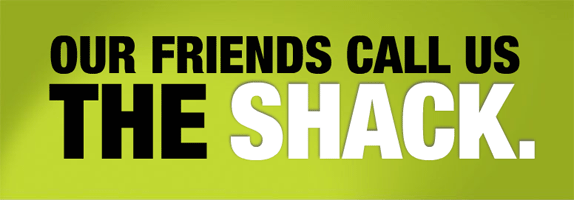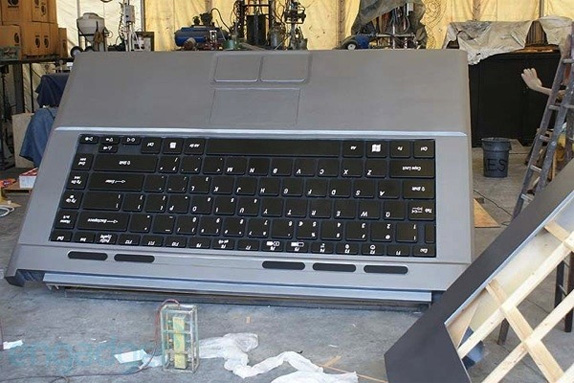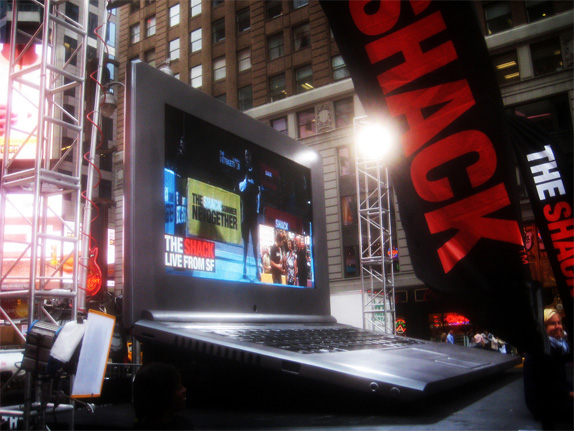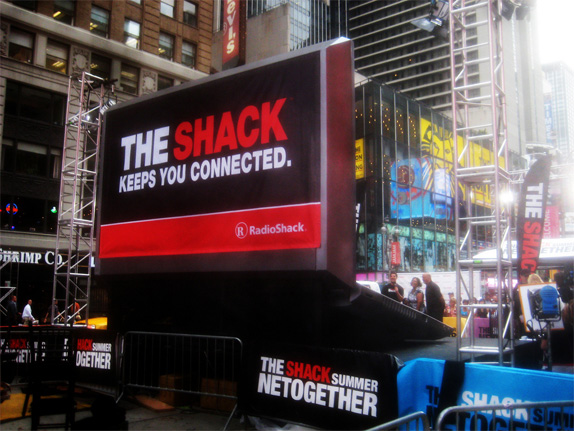Thursday, August 6, 2009
AVIVA | "Life's Little Drama" commercials
Agency: AMV BBDO, London
Production Company: Outsider
Director(s): Henry Littlechild
Creatives: Simon Chaudoir (DoP)
Diane Leaver (Creatives)
Si Rice (Creative)
Adam Rudd (Editor)
Yvonne Chalkley (Agency Producer)
Country: United Kingdom
Johnnie Walker | The Walk (The Man Who Walked Around The World)
 credits
creditsBrand: Johnnie Walker whisky
Agency: BBH London
Agency Producer: Ruben Mercadel
Creative Director: Mick Mahoney
Creative: Justin Moore
Director: Jamie Rafn
Production: HLA
Producer: Stephen Plesniak
Director of Photography: George Richmond
Post Production: Glassworks London
Editor: Kate Owen
RadioShack |Rebrand
Tomorrow, the company will kick off a three-day event in New York's Time Square and San Francisco's Justin Herman Plaza. "The Shack Summer Netogether" will use two 11 x 17-foot "laptops" broadcasting live video to connect activities in both cities.
RadioShack plans to use digital media to connect consumers with its experiential program via a new Web site designed by BSSP and its new Facebook page.
"The idea was to use Facebook as a platform to break into social media," said David Blum, executive director of interactive services at BSSP. "It's the predominant place where social interaction happens on the Web nowadays."
Major media spending on the brand is approximately $120 million annually, excluding online spending. Aegis' Carat, Dallas, handles media dutie
The ads are decidedly quirky and range in style and tone from the introductory spot described above to a commercial that tells consumers "The Shack sells more phones than the population of Scandinavia." In the latter, an animated ad is set in "Phonelandia" and features thumping European dance music and phones and PDAs dressed in wigs and hats, drinking beer and smoking pipes and generally chillin' in a grassy field with a mountain range backdrop.
Another spot stresses that the electronics retailer has more "expertise than a truck full of Einsteins" with imagery of a lorry crammed with just that.
"If you think about how you use nicknames, you generally use them with friends, people for whom you have an affinity and trust. Those are important attributes for any brand and certainly for us," said Lee Applbaum, CMO of RadioShack, who explained that consumers and the company have used brand name shorthand for years. "If you can latch onto a brand truth, it's a really wonderful thing."
Radio Shack launched yesterday a new marketing initiative to position itself as The Shack. “Our friends,” they claim “call us the Shack.” With friends like that, who needs enemies?
“Trust is a critical attribute of any successful retailer, and the reality is that most people trust friends, not corporations. When a brand becomes a friend, it often gets a nickname — take FedEx or Coke, for example. Our customers, associates and even the investor community have long referred to RadioShack as ‘The Shack,’ so we decided to embrace that fact and share it with the world,” said Lee Applbaum, RadioShack’s chief marketing officer.

As far as I understand, the Radio Shack name and logo will NOT be replaced with this new name or “logo.” It’s simply part of a campaign to help seed this new persona, created by Butler, Shine, Stern and Partners. Which is good news, because The Shack is extremely ridiculous — even more so than The Hut— and does nothing but dig Radio Shack into a bigger hole of un-coolness. The effort is in no way aided by the unimaginative graphics and “logo” that have accompanied the launch. The type is boringly simple, even annoying in its lackluster execution. And, seriously, giant laptops to create buzz in the two cities (New York and San Francisco) where there are more people with their head buried in an iPhone per capita than anywhere else? Oh, and yes, they are plain lame. Giant pumpkins on ice sound more appealing.
Radio Shack needs a major overhaul and it should take advantage of the idiosyncratic products they carry that you can hardly find anywhere else, a sort of geek thrift store. The Shack campaign is insipid at best and harmful to the brand at worst.

Giant laptop in the making. Image source.


Launch at Times Square in New York. Photos by Flickr user Brechtbug
Axe| Periodic table

Executive Creative Director: Jose Miguel Sokoloff
Creative Directors: Margarita Olivar, Juan Carlos González
Art Director: Margarita Olivar
Copywriter: Juan Carlos González
Photographer: Esteban Sosnitsky, Zumo
Agency Producer: Sonia Llanos
Other Additional Credits: Juanita Delgado, Natalia Franco
Absolut| "Doing things differently leads to something exceptional"
Catherine Zeta-Jones:::Horndogs in T-Mobile ads
New strategy by the carrier of showing horny guys drooling all over the actress...
T-Mobile Mobile Makeover "Invisible"
T-Mobile Mobile Makeover "Dinner"
Google These Billboards
 When the online search provider Google wanted to push its Enterprise software to business leaders, the company chose outdoor advertising.
When the online search provider Google wanted to push its Enterprise software to business leaders, the company chose outdoor advertising.By buying billboards along well traveled routes in four cities (the Massachusetts Turnpike in Boston, MA; the Eisenhower Expressway in Chicago, IL; the West Side Highway in New York City, NY; and U.S. 101 in San Francisco, CA), Google is making sure it reaches as many people in its target audience as possible.
As reported in Mediaweek, the campaign focuses on the internal monologue of a business professional who is frustrated with other, more expensive software offerings. Over the course of a month, commuters will see the fictitious businessperson come to an epiphany and switch to Enterprise.
 The campaign is accomplished through daily vinyl copy changes. Workers change the copy between 6:30 and 7:30 am, guaranteeing the next installment is ready for that day’s commute.
The campaign is accomplished through daily vinyl copy changes. Workers change the copy between 6:30 and 7:30 am, guaranteeing the next installment is ready for that day’s commute.It’s not the first time Google has gone outdoor. The company has used bus ads and poster size billboards in the past to raise awareness of new offerings. This is, however, most likely the highest impact campaign from the search giant yet.
The campaign generated massive media attention, with coverage in major newspapers (such as the Boston Globe) and in the trade press (in publications such as PC World).
It serves as an excellent example of outdoor advertising being the premiere way to reach busy commuters, and make a splash doing it.
One has often heard this in client conference rooms: ‘why can’t we build a brand without any advertising? Like Google?’. One can, if everyone had a Google-like product. Thanks to a heady mix of great product and PR, Google rarely had to use advertising to promote it’s search engine. With Microsoft offering some serious competition via Bing, Google has perhaps seen the need to get back at Microsoft. Google is now taking billboards across several US cities to promote Google Apps – a bundle of business applications that sells for $50 per worker annually, in a campaign labeled ‘Going Google’.

The cloud-based, free Google Apps have been around since 2007 but have not been a serious threat to Microsoft’s Office suite. Even though the paid version is ‘a fraction of what Microsoft Exchange costs’ it still hasn’t been able to break the big business’ preference for MS Office. With new ventures like Chrome OS, Google may have to rely on a lot more than word of mouth to promote it’s applications. The advantage it has is that Google being Google, it gets written about for anything it does. Even if it is a pretty average billboard put up in Boston.
Do yo think Google needs advertising to sell it’s wares?






